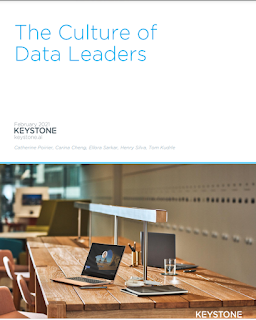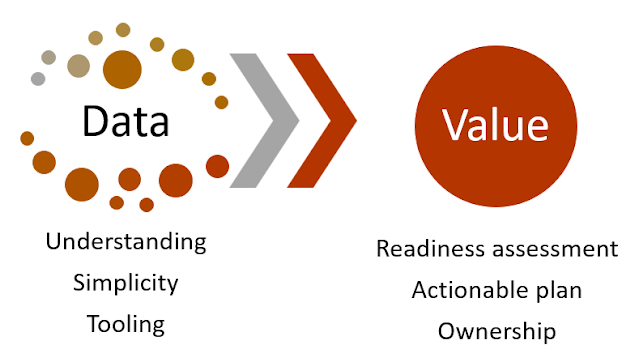There was an excellent EDM Webinar with Microsoft discussing the CDO seat at the cloud table with panellist John Bottega (president of the EDM council) , Karthik Ravindran (General Manager, Enterprise Data) and Mike Flasko (General Manager Data governance and privacy platform) on 29 March.
The session discussed some really important topics
around, data governance and data management. Most businesses are on a data modernization journey and often the progress with in business is in small steps. This has the advantage to reduce the risk to business and to help move
things forward. There are two important principles to be considered:
- Modernization not migration. It is that digital
transformation focusing on the data
estate to accomplish those outcomes. Incrementally modernizing those data estates into an architecture which enables us to consistently manage and govern our data assets, as well as responsibly
democratize those data assets
- There is someone in
the business to champion data, solving problems with data across the
enterprise and driving new tools to leverage maximising business value. It is important to unlock the
potential of data and make it more accessible to users to be able to
accomplish those opportunities. Also thinking about how
data is proliferating throughout the business and the need to manage and govern it across
the enterprise.
There has been an organic
evolution of the data estates, from the paper driven standards defining data management to technology driven outcomes. The implementations of standards is hugely varied and diverse across the organization. Creating benchmarks for core themes accountable to
managing data hasn't been consistent or scalable. There has been a focus on making data management, the operations of data
management and data governance, consistent and scalable through intelligent
automation. When you start
democraticing data it is enabling teams across
the company to discover the data, access it and use the data. Knowing that there are guardrails in place to ensure that the foundations of data management and data governance are being done well at scale, gives confidence in the data.
There is a question about how does one manage democratization and acceptable data with security and privacy in place. A couple
of key characteristics stood out
- the pure volume of data that we were
collecting was not going to scale to the ways we approach things originally
- that transformational
power of the cloud to governance to data management
Looking at the problem questions they asked
- why can't inventory and classification, be a one click to click problem that scales up
and down with your data estate.
- why can't
classification be intelligent with machine learning infused across that journey for a broad and deep
understanding of the data assets that are being collected.
This led to core components the should be looked at
- who is the owner
- who is accountable is useful for managing a data privacy program and trying to facilitate the data subject
rights requests or understand where personal data is held about a particular data
subject.
- It is important to have a common data mapping to aid understanding so that can be used to drive everything from privacy
program to security posture risk analysis.
Most importantly it is to think about data governance differently. Data governance has been around for a long time. It is often looked at as being a gatekeeper function versus and enabling function. Many
companies don't use the word governance as they feel it frightens people. Mike disagreed with
that statement where you think of data governance as an impediment to progress. Governance is critical to progress.
A question was asked about how did you sell the governance concept successfully within Microsoft.
There are many opportunities in this space, especially with the advances that are
happening in tech and platform with scaling. To achieve this data management excellence from the beginning it is important to standardize, making consistent data, have scalability, be seamless and simple to use. The core things
- be able to discover data assets
in a single catalogue
- standardizing data quality management by having consistent way to measure the
quality of the data estate across various data quality dimensions, like
completeness and accuracy. Be able to see the health of the
data estate across those quality dimensions
- privacy, security and compliance. Compliance is especially important for enterprise standards that an
organization has to be compliant with but also with the growing and ever
evolving set of regulatory standards that are appearing in the
industry.
With all of this in mind companies across many industries have come together to create a playbook of best practice for managing data in the cloud. This is the CDMC. It was built by the community sharing ideas for best practice.










